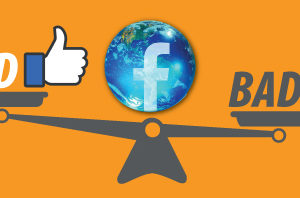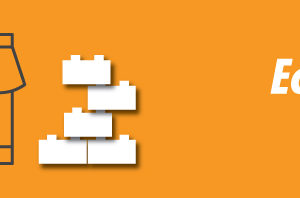
Throughout a brand—or product’s—history, one of the most critical elements in its success or failure is its perception to the general public. From failures like New Coke or Ayds Diet Candy to immense successes like Apple or Burberry, the reinvention of a product line can save companies, improve waning sales numbers, or in the case of the following two items, change the course of history.
While the following two “products” would not fit into the traditional sense of rebranding (company pays an elite branding agency for new ideas and a new direction), they do, however, show an amazing sense of positioning, marketing, and in turn, success.
Blog: This is What Happens When You Choose ‘Dollar Menu’ Branding Help
From Cockroach of the Sea to Delicacy
As a corn-fed Midwestern boy who grew up in a middle class household, I rarely experienced the finer things in life. One of these ‘finer things’ was lobster (it took me 20 years to learn there are differences between Maine and Caribbean lobsters). But did you know that this delicacy was once considered cruel and unusual punishment for prisoners (and at the time indentured servants)?
Garbage Food
“Lobster shells about a house are looked upon as signs of poverty and degradation,” wrote John J. Rowan in 1876. (Author’s note: Throw out your lobster shells—my apartment would look pretty disgusting if I left lobster shells about, too)
Lobster was considered garbage food for at least four centuries, including a time when indentured servants rioted so that they wouldn’t receive lobster more than three times per week.
So what changed? It all started with the railroad, cross-country travel, and the Second World War. When lobster sales were confined to states facing an overabundance of giant lobsters (4-5 pound lobsters were small), people weren’t exactly thrilled to see an insect-like creature that washed up on shore in piles up to two feet high.
How the Lobster Clawed its way up to Luxury Status
However, with the growth of the railroad, Americans were able to make their way across the country more easily. This created a new market of buyers who had never heard of lobster.
Dining cars, diners, and restaurants had found an ingredient that was not only dirt cheap, but in high demand. Customers would be served lobster on a train, discover the dish was flavorful, and begin to request this “rare, exotic item” be offered in their hometown. Chefs and restaurant owners capitalized on this and began to prepare lobster in more creative ways, and people traveling to New England found this dish to be exquisite, authentic, and local (Author’s note: It was the Heineken, Fosters, Corona, or Stella Artois of seafood). This marked the beginning of a new era for the soon to be delicacy.
The next big boost for the ‘lobster as delicacy’ motif came during World War II, when the dish was listed as a luxury item not subjected to rations. This is the real turning point, as people of all classes began to eat it enthusiastically, and discover its deliciousness.
But this artful rebrand pales in comparison to one which created a dietary staple now grown on every continent except Antarctica. This rebrand effectively changed the course of history, creating a sustainable, nutrient-dense crop that reduced an entire continent’s risk of famine due to grain crop failure; helped to mitigate the effects of such diseases as scurvy, tuberculosis, measles and dysentery; and has been credited with a population boom which fueled the Industrial Revolution.
This rebranding is that of the potato.
Nutrient Dense Tuber Saves Millions
Nothing like a good TED Talk to inspire a bit of curiosity and change the way you look at something as mundane as the potato.
The Story of Der Kartoffelkönig (the Potato King)
One of the more interesting discussions I stumbled on (aside from that of “glorious sunset” payouts) was part of an NPR TED Radio Hour show called Brand Over Brain with Rory Sutherland, Executive Creative Director of OgilvyOne.
In the discussion, which included tips on improving train journeys and saving flushable wet wipes, Sutherland shared points on how a bit of rebranding convinced the German/Prussian people to embrace a cheap, durable food that would replace wheat, and ultimately lower the cost of bread.
From Ads of the World Facebook Page
Back in 18th century Prussia, Frederick the Great was contemplating the problem of feeding his people. The staple food, at the time, was bread. Frederick was worried by the dependence on crops and the escalating cost of it.
He proposed the potato as a suitable new addition to the nation’s diet, but the people were unimpressed, prompting one town to write;
“The things have neither smell nor taste, not even dogs will eat them, so what use are they to us?”
Rather than accepting defeat, Frederick came up with […] solution to his problem. He decreed the potato a royal vegetable, planted a royal field with potato plants and ordered his guards to protect them (Author’s Note: He also ordered his guards to do a less than stellar job protecting the crops).
This had the effect of making the potato incredibly desirable, so much so that peasants would risk breaking the law to steal from the king’s garden.
The plan, according to legend, worked. Peasants stole these “royal potatoes” for their gardens. It saved the peasants from disease and famine and led to the modern Industrial Revolution, resulting in the tradition of putting potatoes on the grave of “The Potato King,” according to an illustration on the New York Times.
The Power of a Brand Story
If you believe that this is the stuff that branding legends (brand stories?) are made of, you’d be right. Nearly every country that relies heavily on the potato has a similar story:
- France: Antoine-Augustin Parmentier convinced Louis XVI to guard 100 acres filled with potatoes, letting the guard off duty one night. Local farmers went to the field and stole the potatoes.
- Greece: According to legend, although Ioannis Kapodistrias ordered that potatoes be handed out to anyone interested, the population was reluctant at first to take advantage of the offer. The legend continues, that he then ordered that the shipment of potatoes be unloaded on public display on the docks, and placed it under guard to make the people believe that they were valuable. Soon, people started to steal them. The guards had been ordered to turn a blind eye to such behaviour, and soon the potatoes had all been “stolen.” Kapodistrias’ plan to introduce them to Greece had succeeded.
Simply put, the legend grew, leading to the popular vegetable that has become one of the most versatile ingredients in the history of cuisine—mashed, fried, baked, or occasionally imbibed (note: few brands make potato vodka due to declining wheat prices and improved harvesting methods). Thanks to new growing methods, the potato has become even more stable (Blight-free is the way to be), and is rapidly becoming a staple in emerging markets. Maybe in a few decades Chairman Mao will be remembered not for his tyranny and misguided economic policies, but for his role in bringing the potato to China.
What’s Next?
Branding is the first consideration that a company selling products should make, as the wrong decision can put a product at a disadvantage before it even enters the market. Imagine if restaurants sold orange roughy under its real name—slimehead?
While I’d assume the next big thing in seafood is the Lionfish (it’s delicious, it’s hardy, and it’s invasive— a single female Lion fish can lay up to one million eggs a year with a high rate of success) or the Asian Carp (also apparently known as the silverfin or Kentucky Tuna—also insanely invasive), both could use a rebrand to reach new regions.
What about your brand?
If you’re looking for a new outlook in 2017 and beyond, Ideas BIG can help.
See our case studies and get in contact with us for more.




